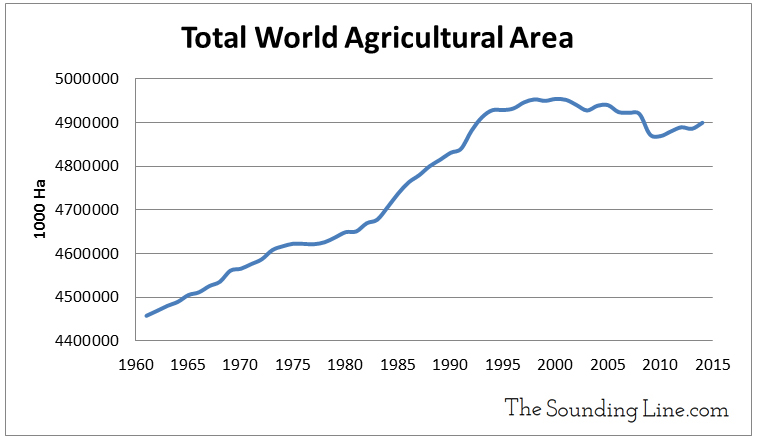Submitted by Taps Coogan on the 20th of December 2017 to The Sounding Line.
Enjoy The Sounding Line? Click here to subscribe for free.
The following chart, from Our World in Data, shows the number of people in the world who are fed via agriculture that relies on synthetic fertilizers and the number who rely on ‘natural’ methods of agriculture. Typically made via the Haber–Bosch process (a chemical process that converts natural gas into other chemicals into fertilizer), synthetic fertilizers have garnered increasing criticism for their environmental impacts. Yet today, nearly half of the world’s population relies on synthetic fertilizers, a dramatic increase from the 1960s when just 13% of the world’s population was reliant on synthetic fertilizers.
Many argue that the extent to which the surging usage of synthetic fertilizer is a problem. Unfortunately, the issue is largely a moot point. The world’s population is expected to grow by another billion people in the next 25 years. To put that into perspective, today the population of all of North and South America combined is about one billion people. That means that in the next 25 years the world will have to find a way to feed two new continents worth of mouths. At the same time, the amount of active agricultural land around the world hit a ceiling since 2000 and is declining. Despite the popularity of organic and ‘sustainable’ agriculture, because these methods are less productive than current industrial farming methods, they wouldn’t be able to support today’s population let alone the population 25 years from now. Even with increased synthetic fertilizer usage, it is going to be an uphill battle to produce the food needed to prevent increased famine and hunger in the future.

P.S. We have added email distribution for The Sounding Line. If you would like to be updated via email when we post a new article, please click here. It’s free and we won’t send any promotional materials.
Would you like to be notified when we publish a new article on The Sounding Line? Click here to subscribe for free.

